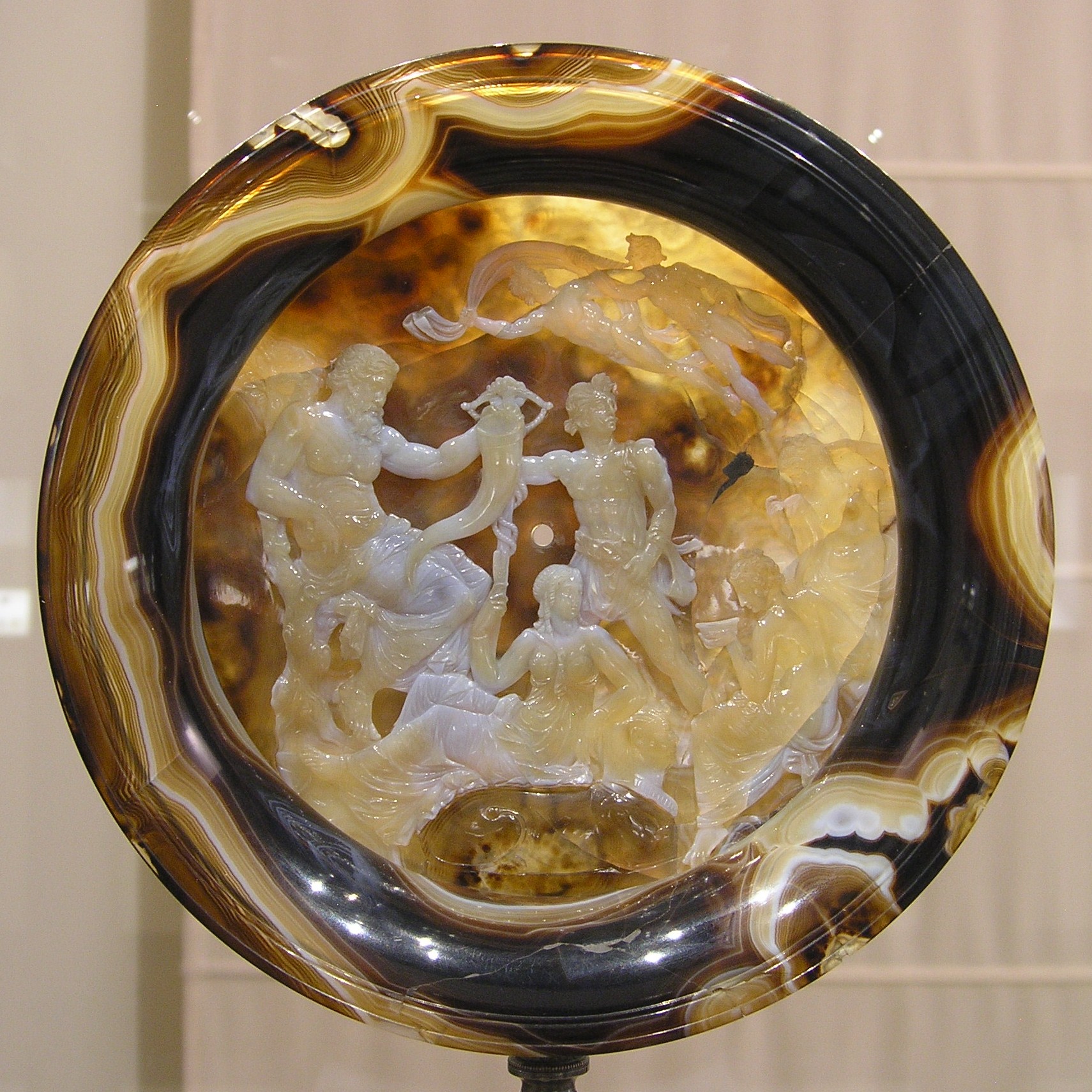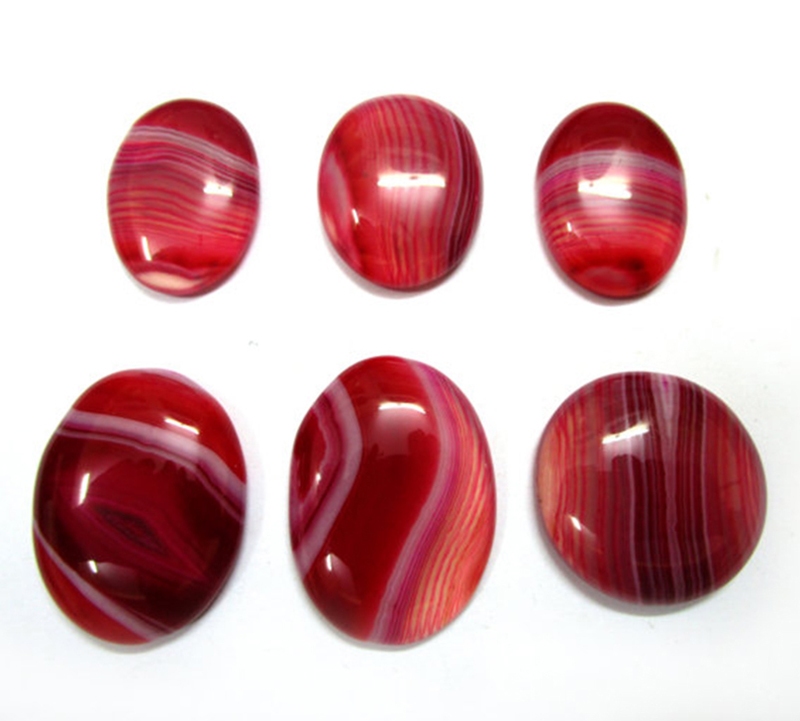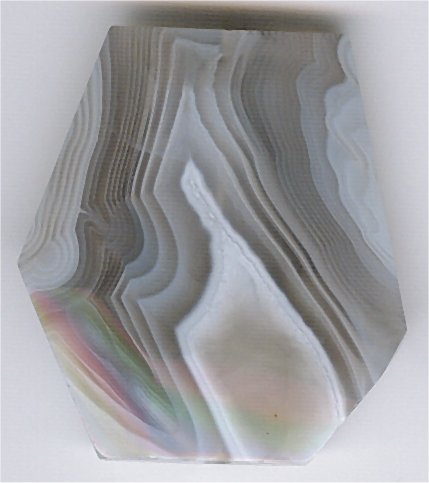|
Tazza (cup)
A tazza (Italian, "cup", plural ''tazze'') is a wide but shallow saucer-like dish either mounted on a stem and foot or on a foot alone. The word has been generally adopted by archaeologists and connoisseurs for this type of vessel, used either for drinking, serving small items of food, or just for display. Tazze are most commonly made in metal, glass, or ceramics, but may be made in other materials. The Farnese Tazza is a 2nd-century BC cameo cup of Hellenistic Egypt in four-layered sardonyx agate. It is now in the Naples National Archaeological Museum (Inv. MANN 27611), and is 20 cm wide. The shape and the name are sometimes adopted for reference to very large sculptured objects, especially ones used for fountains. The colossal tazza in the Linda Hall Library, Kansas City, Missouri, is one of the largest pieces of malachite in North America. It was presented by Czar Nicholas II to August Heckscher in 1910 and given to the Linda Hall Library in 1972 by Mrs. Helen Spencer. ... [...More Info...] [...Related Items...] OR: [Wikipedia] [Google] [Baidu] |
Archaeologist
Archaeology or archeology is the scientific study of human activity through the recovery and analysis of material culture. The archaeological record consists of artifacts, architecture, biofacts or ecofacts, sites, and cultural landscapes. Archaeology can be considered both a social science and a branch of the humanities. It is usually considered an independent academic discipline, but may also be classified as part of anthropology (in North America – the four-field approach), history or geography. Archaeologists study human prehistory and history, from the development of the first stone tools at Lomekwi in East Africa 3.3 million years ago up until recent decades. Archaeology is distinct from palaeontology, which is the study of fossil remains. Archaeology is particularly important for learning about prehistoric societies, for which, by definition, there are no written records. Prehistory includes over 99% of the human past, from the Paleolithic until the adve ... [...More Info...] [...Related Items...] OR: [Wikipedia] [Google] [Baidu] |
Connoisseur
A connoisseur ( French traditional, pre-1835, spelling of , from Middle-French , then meaning 'to be acquainted with' or 'to know somebody/something') is a person who has a great deal of knowledge about the fine arts; who is a keen appreciator of cuisines, fine wines, and other gourmet products; or who is an expert judge in matters of taste. In many areas, the term now has an air of pretension, and may be used in a partly ironic sense. In the art trade, however, expert connoisseurship remains a crucial skill for the identification and attribution to individual artists of works by the style and technique, where documentary evidence of provenance is lacking. The situation in the wine trade is similar, for example in assessing the potential for ageing in a young wine through wine tasting. Connoisseurship in art "The ability to tell almost instinctively who painted a picture is defined ... as connoisseurship". Connoisseurs evaluate works of art on the basis of their experie ... [...More Info...] [...Related Items...] OR: [Wikipedia] [Google] [Baidu] |
Farnese Cup
The Farnese Cup or Tazza Farnese is a 2nd-century BC cameo hardstone carving bowl or cup made in Hellenistic Egypt in four-layered sardonyx agate, now in the Naples National Archaeological MuseumInv. MANN 27611. It is a 20 cm wide and similar in form to a Greek phiale or Roman patera, with no foot. It features relief carvings on both its exterior and interior surfaces and is around twenty centimeters in diameter. There is no surviving evidence regarding when and why the piece was made, though there is general consensus among scholars that it was created in Alexandria, due to the blending of Ancient Egyptian and Ancient Greek or Roman iconography found in its relief carvings. This provides a range of time wherein it may have been created, spanning from approximately 300 BC to 20 BC. The underside has a large Gorgon's head occupying most of the area, probably intended to ward off evil. The upper side has a scene with several figures that has long puzzled scholars. It seem ... [...More Info...] [...Related Items...] OR: [Wikipedia] [Google] [Baidu] |
Cameo (carving)
Cameo () is a method of carving an object such as an engraved gem, item of jewellery or vessel. It nearly always features a raised (positive) relief image; contrast with intaglio, which has a negative image. Originally, and still in discussing historical work, cameo only referred to works where the relief image was of a contrasting colour to the background; this was achieved by carefully carving a piece of material with a flat plane where two contrasting colours met, removing all the first colour except for the image to leave a contrasting background. A variation of a carved cameo is a cameo incrustation (or sulphide). An artist, usually an engraver, carves a small portrait, then makes a cast from the carving, from which a ceramic type cameo is produced. This is then encased in a glass object, often a paperweight. These are very difficult to make but were popular from the late 18th century through the end of the 19th century. Originating in Bohemia, the finest examples were mad ... [...More Info...] [...Related Items...] OR: [Wikipedia] [Google] [Baidu] |
Sardonyx
Onyx primarily refers to the parallel banded variety of chalcedony, a Silicate minerals, silicate mineral. Agate and onyx are both varieties of layered chalcedony that differ only in the form of the bands: agate has curved bands and onyx has parallel bands. The colors of its bands range from black to almost every color. Commonly, specimens of onyx contain bands of black and/or white. Onyx, as a descriptive term, has also been applied to parallel banded varieties of alabaster, marble, calcite, obsidian and opal, and misleadingly to materials with contorted banding, such as "Cave Onyx" and "Mexican Onyx". Etymology ''Onyx'' comes through Latin (of the same spelling), from the Ancient Greek , meaning "claw" or "fingernail". Onyx with flesh-colored and white bands can sometimes resemble a fingernail. The English word "nail" is cognate with the Greek word. Varieties Onyx is formed of bands of chalcedony in alternating colors. It is cryptocrystalline, consisting of fine intergrow ... [...More Info...] [...Related Items...] OR: [Wikipedia] [Google] [Baidu] |
Agate
Agate () is a common rock formation, consisting of chalcedony and quartz as its primary components, with a wide variety of colors. Agates are primarily formed within volcanic and metamorphic rocks. The ornamental use of agate was common in Ancient Greece, in assorted jewelry and in the seal stones of Greek warriors, while bead necklaces with pierced and polished agate date back to the 3rd millennium BCE in the Indus Valley civilisation. Etymology The stone was given its name by Theophrastus, a Greek philosopher and naturalist, who discovered the stone along the shore line of the Dirillo River or Achates ( grc, Ἀχάτης) in Sicily, sometime between the 4th and 3rd centuries BCE. Formation and properties Agate minerals have the tendency to form on or within pre-existing rocks, creating difficulties in accurately determining their time of formation. Their host rocks have been dated to have formed as early as the Archean Eon. Agates are most commonly found as nodules wi ... [...More Info...] [...Related Items...] OR: [Wikipedia] [Google] [Baidu] |
Naples National Archaeological Museum
The National Archaeological Museum of Naples ( it, Museo Archeologico Nazionale di Napoli, italic=no, sometimes abbreviated to MANN) is an important Italian archaeological museum, particularly for ancient Roman remains. Its collection includes works from Greek, Roman and Renaissance times, and especially Roman artifacts from the nearby Pompeii, Stabiae and Herculaneum sites. From 1816 to 1861, it was known as Real Museo Borbonico ("the Royal Bourbon Museum"). Building The building was built as a cavalry barracks in 1585. From 1616 to 1777 it was the seat of the University of Naples. During the 19th century, after it became a museum, it suffered many changes to the main structure. Collections The museum hosts extensive collections of Greek and Roman antiquities. Their core is from the Farnese Collection, which includes a collection of engraved gems (including the Farnese Cup, a Ptolemaic bowl made of sardonyx agate and the most famous piece in the "Treasure of the Magnifi ... [...More Info...] [...Related Items...] OR: [Wikipedia] [Google] [Baidu] |
Linda Hall Library
The Linda Hall Library is a privately endowed American library of science, engineering and technology located in Kansas City, Missouri, sitting "majestically on a urban arboretum." It is the "largest independently funded public library of science, engineering and technology in North America" and "among the largest science libraries in the world." Description Established in 1946 through the philanthropy of Linda (1859–1938) and Herbert F. Hall (1858–1941), of the Hall-Bartlett Grain Co., the library has achieved global recognition and stature. The library is open to the public with individual researchers, academic institutions and companies from Kansas City and around the world using the library’s extensive research-level collection. Though not affiliated with its neighbor, the University of Missouri-Kansas City, many students and faculty from UMKC and other local colleges and universities utilize the library each day. The library's William N. Deramus III Cosmology Theater ... [...More Info...] [...Related Items...] OR: [Wikipedia] [Google] [Baidu] |
Kansas City, Missouri
Kansas City (abbreviated KC or KCMO) is the largest city in Missouri by population and area. As of the 2020 census, the city had a population of 508,090 in 2020, making it the 36th most-populous city in the United States. It is the central city of the Kansas City metropolitan area, which straddles the Missouri–Kansas state line and has a population of 2,392,035. Most of the city lies within Jackson County, with portions spilling into Clay, Cass, and Platte counties. Kansas City was founded in the 1830s as a port on the Missouri River at its confluence with the Kansas River coming in from the west. On June 1, 1850, the town of Kansas was incorporated; shortly after came the establishment of the Kansas Territory. Confusion between the two ensued, and the name Kansas City was assigned to distinguish them soon after. Sitting on Missouri's western boundary with Kansas, with Downtown near the confluence of the Kansas and Missouri Rivers, the city encompasses about , making ... [...More Info...] [...Related Items...] OR: [Wikipedia] [Google] [Baidu] |
Malachite
Malachite is a copper carbonate hydroxide mineral, with the formula Cu2CO3(OH)2. This opaque, green-banded mineral crystallizes in the monoclinic crystal system, and most often forms botryoidal, fibrous, or stalagmitic masses, in fractures and deep, underground spaces, where the water table and hydrothermal fluids provide the means for chemical precipitation. Individual crystals are rare, but occur as slender to acicular prisms. Pseudomorphs after more tabular or blocky azurite crystals also occur. Etymology and history The stone's name derives (via la, molochītis, frm, melochite, and Middle English ''melochites'') from Greek Μολοχίτης λίθος ''molochites lithos'', "mallow-green stone", from μολόχη ''molochē'', variant of μαλάχη ''malāchē'', "mallow". The mineral was given this name due to its resemblance to the leaves of the mallow plant. Malachite was mined from deposits near the Isthmus of Suez and the Sinai as early as 4000 BCE. It wa ... [...More Info...] [...Related Items...] OR: [Wikipedia] [Google] [Baidu] |
.jpg)
.png)






